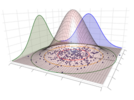
The aeroelastic behavior of slender structures such as long-span cable-supported bridges is essential to be studied as part of their design as they can develop significant vibrations when exposed to atmospheric wind flow. The trends for increase in the flexibility and reduction of mass of structures make such problems more prominent and the analysis more challenging, thus amplifying the need for accurate, robust and efficient prediction models.
further information
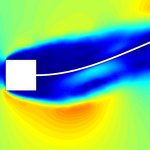
An in-house flow solver based on Vortex particle Method (VPM) is extended for 2D and pseudo-3D FSI simulation of thin-walled systems. A structural solver based on a corotational finite element formulation is coupled with 2D VPM to account the geometrically nonlinear effects accurately. This model is extended further to perform aero-electromechanical coupled simulation for analyzing the performance of different cantilever energy harvesters. Furthermore, the existing pseudo-3D multi-slice model is extended to simulate the FSI simulation of thin surface type systems such as cantilever roofs and cooling towers.
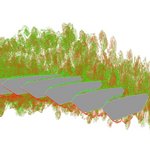
Several research loci are considered as a part of this project, including: (i) a categorical modeling approach for aerodynamic model evaluation; (ii) turbulent Pseudo-3D vortex method for buffeting and flutter analyses of bridges; (iii) a synergistic comparison framework for CFD and semi-analytical models; (iv) comparison metrics for time-histories, tailored to identify and quantify features certain features of the time-dependent aeroelastic response and forces; (v) a method for determination of the complex form of the aerodynamic admittance by simulating deterministic gusts.

Modern models and methods are arising to tackle the increasing need to address non-linearity in slender structures under wind flows. These, however, do require validation. The best way to achieve this is through the implementation of experimental procedures that would allow for the substantiation of the proposed approach.
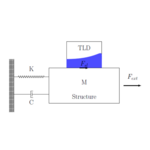
Flexible, slender and tall structures, such as high-rise buildings, bridges or chimneys are sensitive to dynamic wind excitations, therefore damages or fatigue may occur. For many of these structures, the provision of additional damping is the only robust and pratical method to control dynamics problems. Liquid dampers represent a research area with increased applicability in structures due to their low maintenance costs and efficiency in use. The research work will involve numerical coupling of liquid tanks in wind-structure response analyses.
With the increasing spans and complex deck shapes, aerodynamic nonlinearity becomes a crucial concern in the design of long-span bridges. Conventional bridge aerodynamic models consider the force induced by the free-stream turbulence and deck motion to be independent. The models do not account for the two crucial interaction aspects closely tied to aerodynamic nonlinear behavior: the effect of large-scale sinusoidal vertical gusts on the shear layer of a moving body and the nonlinear dependence of the aerodynamic forces on the effective angle of attack. It is vital to study the wind-induced vibration problem in a turbulent environment synergistically to capture these effects.
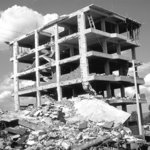
Structures can be exposed to extreme load conditions during their lifetime, ranging from earthquakes and explosions to severe impact loads from land, sea and air vehicles. The resulting requirements for the design and / or the verification of the structures often exceed the requirements of conventional use. Possible mechanisms must be taken into consideration, which positively or negatively influence the structural behavior during an extreme load scenario.

Mathematical optimization strategies can be used to solve a wide variety of problems in the context of physically and/or geometrically nonlinear structural analysis. In addition to the general nonlinear simulation of loaded and restrained structures, which is also supported by a variety of commercial and non-commercial finite element implementations, the use of mathematical optimization allows the numerical solution of extreme value tasks with different target values.
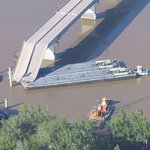
The crushing behavior of the ship during impact was thoroughly investigated using the complex models with consideration of important factors including ship mass, impact velocity, impact angle, pier shape and pier size. To reduce the computational cost, a non-linear mass-spring model (MSM) was developed to replicate the complex finite-element ship model with an optimization model to determine the model parameters introduced in MSM whilst RC pier columns were simplified into lumped masses and fiber beam elements.

Structural assessment is a key element of today’s engineering work to ensure structural safety and serviceability. Modern technologies, such as image capturing with unmanned aircraft vehicles and photogrammetric reconstruction, are used to support the required inspection tasks. An automated analysis and processing of the acquired data allows for an effective structural condition assessment. In the research geometric characteristics are used for model updates, building information linking and mechanical parameter identification.
further information
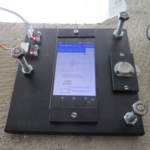
In the context of Structural Health Monitoring (SHM) vibration-based methods can be used to determine the structural state of a structure; thereby, changes of the structural condition are identified from changes in the dynamic properties. Measured responses can be used to calibrate numerical models and to identify the structural state. The reasearch in this field aims to identify structural properties and detecting damage while considering the actual limitations of the sensors and data acquisition system.
further information
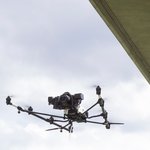
Ensuring structural safety and serviceability is a top priority for infrastructure structures as well as historical buildings. Structures are subject to various aging and damage processes that can only be predicted relatively inaccurately. Therefore, a regular recording and evaluation of the structural condition is required. Since the classical visual inspection the focus has shifted to the use of small Unmanned Aircraft Systems (UAS) as an alternative. The flightsystems equipmented with high-quality cameras qualify these systems for diverse inspection tasks. Various research projects are investigating possible applications of UAS in the inspection of structures as part of a digital maintenance strategy.
Appropriate structural health monitoring systems support effective asset management strategies and reduces lifecycle costs of structures. Nowadays, an abundance of heterogeneous data is generally available, as the number of embedded sensors that monitor our structures exponentially increase.This project proposes physics informed machine learning models that bridge the gaps from pure traditional methods and artificial intelligence approaches. They stand as an alternative to process big volumes of data whilst sustaining the engineering knowledge represented through typical mathematical models.


